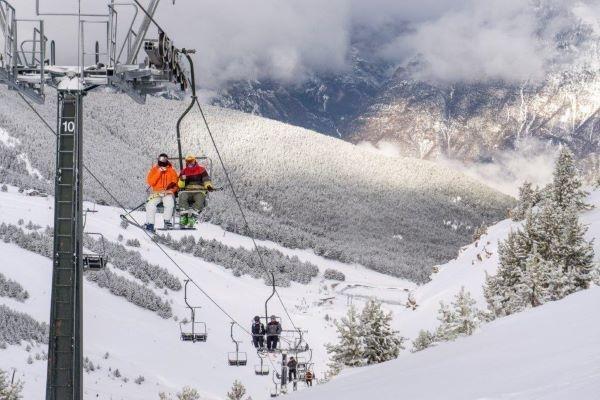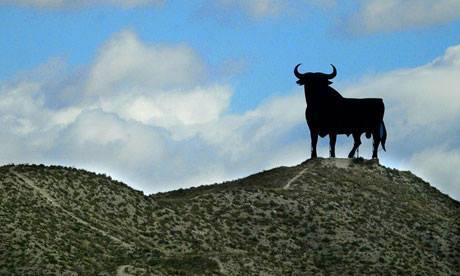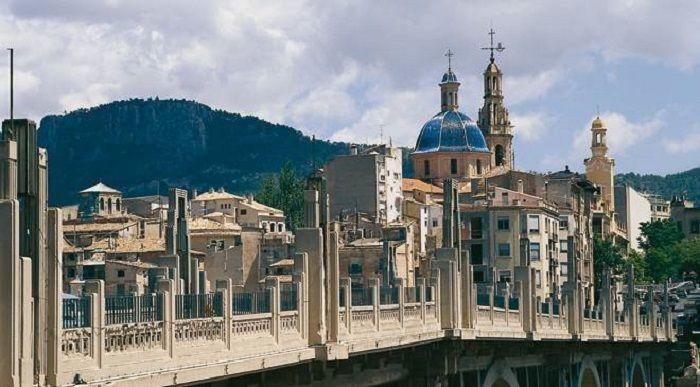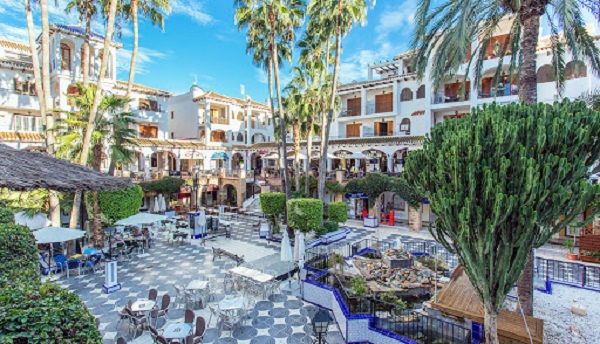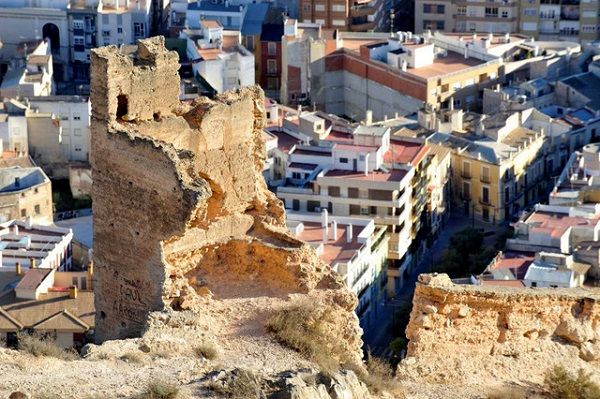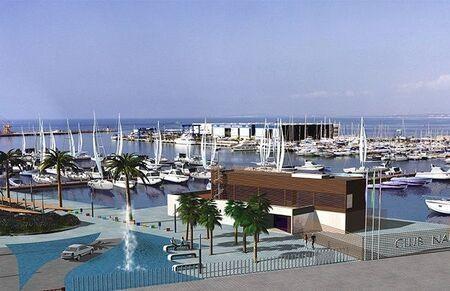The second church was larger and was completed in 1556 but collapsed because of very heavy rains in 1672. Work on the present church began in 1672 and was finished in 1784.
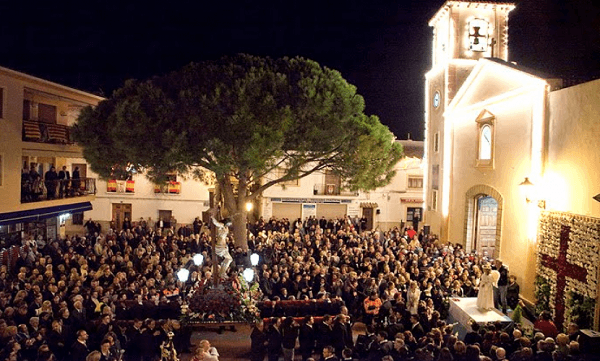
Alfaz del Pi - Town and Municipality
Alfaz del Pi or L’Alfàs del Pi is a town located in the province of Alicante, on the Costa Blanca North. The town nestles in the foothills of the Sierra Helada, in the district of the Marina Baixa.
It is situated 47 kilometres north of Alicante and just 6km from Benidorm and is easily reached by car, the number 10 bus or by the local train/tram, although the train station is situated out of the town itself.
The town centre is situated 3 km inland and was built there to protect the town from attacks from Barbary Pirates, but the area stretches to the coast where you can find the beaches of El Albir.
Albir is actually classed as part of Alfaz del Pi area and boasts a wonderful beachfront with spectacular views to the huge rock Peñon de Ifach at Calpe.
L´Alfas is one of Spain´s most international towns with more than 90 nationalities living/visiting here but British, Scandinavians, Dutch and Belgians are the largest groups.
PLACES TO VISIT ON THE COSTA BLANCA NORTH
PLACES TO VISIT ON THE COSTA BLANCA SOUTH
Where does the name come from?
The name L’Alfàs part means fertile land and PI is the Valencian word for Pine. In the middle of the 16th century Alfaz was a hamlet or settlement, dependant on the Barony of Polop and was known as Alfaz de Polop but on 24th April 1836 Alfaz became independent from Polop and became Alfaz del Pi, the local residents planted a large pine tree in the main square to symbolise this independence.
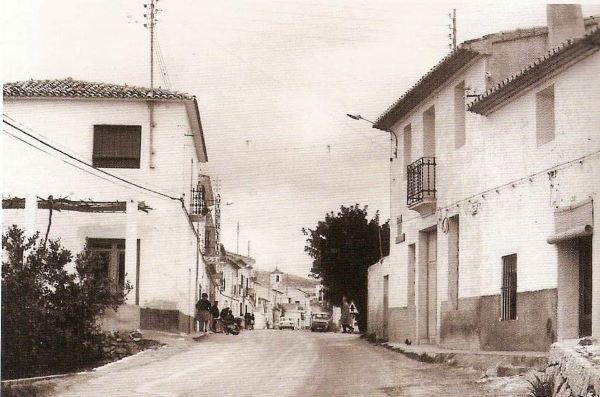
The Town of Alfaz del Pi
In the town you will find everything you need either as a tourist or a resident with various shops, bars and restaurants.
The town boasts its own small cinema and theatre, the Casa de la Cultura situated on Plaza Juan Carlos which is renowned for the yearly Alfaz del Pí Film Festival
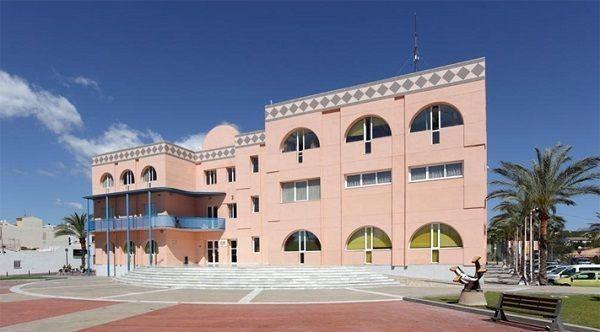
Just behind the busy main street, you can discover the ‘old town’ a neighbourhood with traditional townhouses, San José parish church by the small main square the Plaza Mayor, Town Hall, and the Church of San José. and various street cafés.
Also visit the Parish Church of Cristo del Buen Acierto. Constructed in 1784 by the first patron of the town, San Jose. Today it is dedicated to the “Cristo del Buen Acierto” or Christ of Good Decisions.
The Famous Pine Tree - The first pine tree was planted in 1786, since then, there have been seven trees placed in this same spot, each tree lasts on average of around 80 years and the latest tree was planted in April 2019 which replace the previous pine from 1949.
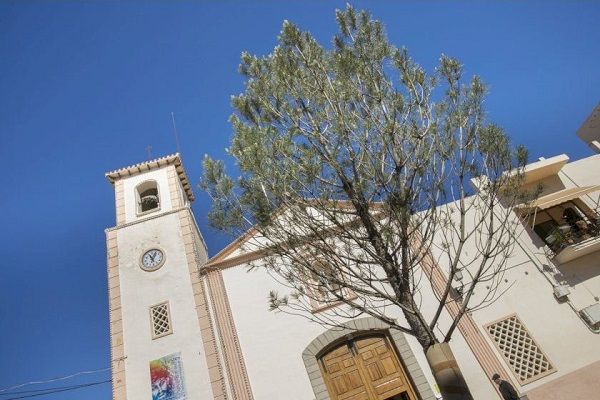
Market Day - The large street market is held every Friday.
Alfaz sports centre (situated beside the Casa de la Cultura)
Many elite athletes come, especially during the winter, to practice in the magnificent facilities of the sports centre. The excellent athletics track has been recently renovated with the same surface used in several Olympic stadiums such as Beijing, Berlin and Barcelona. It also has several football fields with natural and artificial turf, an indoor pavilion and a golf and cricket driving range. L'Alfs del Pi is the ideal place for sports lovers, whether elite or amateur.
Municipal swimming pool. For residents of Alfas del Pi (including Albir), the entrance is just 1.50 Euros, and 2.50 Euros for non residents, although they don't ask you for proof of address.
The opening hours are 12.00 til 20.00 Monday to Friday and 10.00 til 20.00 at weekends and on public holidays. Children under 10 must be accompanied by an adult and to keep the area clean, no picnics are allowed.
The pool is part of the sports ground, directly behind the Casa de Cultura in the centre of Alfas del PI. There is a large, free car park, which usually has plenty of spaces.
Places to visit
Don Quijote Rastro, Situated just outside Alfaz del Pi, every Saturday and Sunday from 10.00am.
Klein-Schreuder Sculpture Garden - Situated just past Don Quijote Rastro, lovely gardens and sculptures, open Saturday and Sunday from 10.00 - 14.00. There are over 30 permanent sculptures with the addition of extra exhibitions throughout the year.
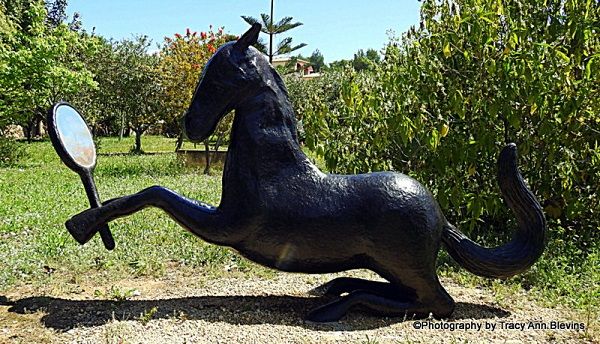
The Molí de Munec
The history of this last remaining flour mill dates back to the late eighteenth and early nineteenth centuries. Free guided visits are organised or a regular basis (generally once a month). During the visit, it explains how the mill was organized, with an upper floor intended for the house of the miller and his family, and a lower floor, where the machinery and other elements necessary for grinding the grain were located. Booking is required and guides are done at separate times in Spanish and English.
Register for the next available tour by sending an email to
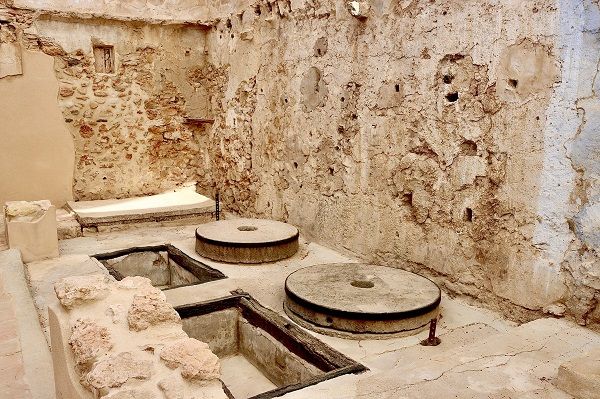
The meeting point is the don Quixote car park. Comfortable clothing and footwear is recommended, because the 20 minute trip to the mill is done on foot.
Bodegas Enrique Mendoza - Situated just outside Alfaz
Enjoy a guided tour of the Bodega, try some wine and enjoy local tapas, booking required.
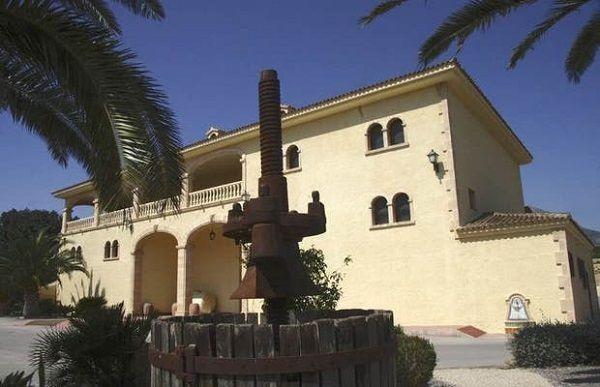
The tour currently costs 16€pp and includes - Guided tour of the winery. Tasting of 6 wines of different varieties (Blanco Chardonnay, Rosado Monastrell, Monastrell- Merlot, Petit Verdot, Las Quebradas, Santa Rosa). Tasting of extra virgin olive oil (AOVE) Barranco Tagarina. Tasting of Spanish sausages and Brie's Toast. Cheese table with Designation of Origin (DOs Vall de Catí, Dehesa de los Llanos and Boffard). Tasting of 1 Premium sweet wine (Dolo de Mendoza) paired with Chocolates Valor
Scandinavia Park
This spacious park is situated just outside the town, it's a great place for children as there is a playground. The park is an excellent sunny site with beautiful trees that offer shade, where you and your family can spend part of the day.
Local Fiestas
Celebrations of the Cross. Held on the 1st of May and lasting three days to honour the cross.
International Film Festival. Held at the beginning of July, the awards are known as the Silver Lighthouse.
Local fiestas of Albir. Held the weekend after 15th August, with recreational events for residents and tourists.
Jubilee Celebrations in honour of the Holy Christ of Good Decisions. This fiesta takes place from the 31st of October until the 10th of November and is the most important local fiestas of Alfaz del Pi in honour of their patron.

November 6th - 10th
Fiestas in honour of the Patron Saint Crist del Bon Encert. - Each town has its Patron Saint, and a fiesta is held in their honour which usually last one week. During this time the towns commercial activity virtually shuts down as celebrations go on practically 24 hours a day. Festivities include processions, dancing in the streets, live music, sporting events and firework displays.
Celebrations in honour of the Immaculate. Coinciding with the bank holiday of the Feast of the Immaculate Conception on the 8th of December, a holy day of obligation, the fiestas are held from the 6th to the 8th of December. The fiestas are also known as the Fiestas of the Immaculate One.
LIKE/FOLLOW Benidorm Seriously on Facebook or join our own Social Group - The Benidorm Social Club for all the latest news and updates.
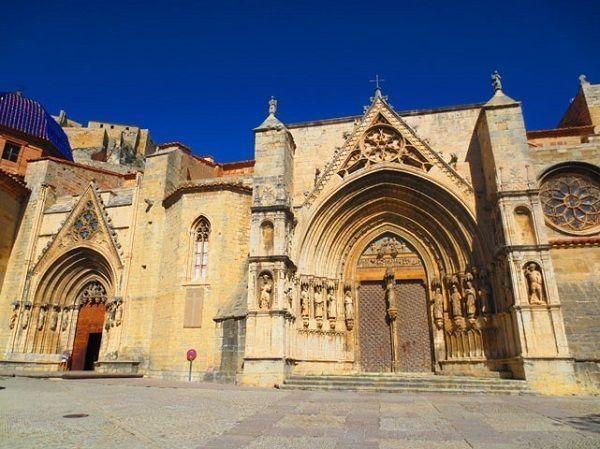
Churches to visit - Alicante Region
Churches to visit Alicante Region - Visit any village, town or city in the province and it is almost inevitable that the most imposing building will be the church or cathedral, most can be found in the main town squares (Plaza Mayor). Below is a list of our favourites and the more slightly unusual churches in the area that are well worth a visit.
What is the difference between a basilica and a cathedral?
A basilica is a church that has obtained the honorary title of Basilica from the Pope; therefore, only catholic churches can have the title of Basilica. A basilica is regarded as a "remarkable church", but there are no specific prerequisites or guidelines, and each decision is made on its merits. The majority of basilicas are given their title due to some sort of cultural significance, but the reasons are unique to each basilica, and once the title is given, it cannot be taken away.
For a church to be given the title of cathedral, it must be the principal building from where a bishop presides over his diocese (the geographic area he looks after and protects). It is therefore the main church on which the other churches of the region depend, so they are generally more imposing and richly decorated buildings.
The Latin name of the bishop’s chair located inside these churches is a cathedral, which in Latin means seat, and must be present to give the title of the cathedral to a church.
Churches to visit Alicante region
Basilica Santa Maria - Alicante
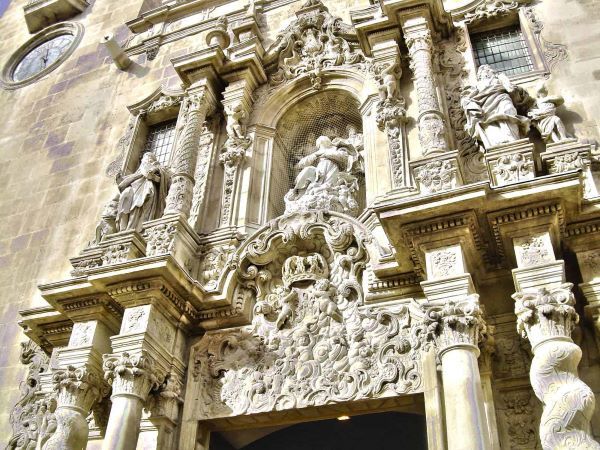
The Basilica of Santa Maria is the oldest active church in Alicante and was built in Valencian Gothic style between the 14th and 16th centuries over the remains of a mosque.
The basilica had to be rebuilt following a fire in the 15th century. Its baroque facade is crowned by two asymmetrical towers, one built in the 14th century and the other in the 18th century. Highlights include the doorway with its image of the Virgin Mary by sculptor Juan Bautista Borja.
Inside it has an 18th century rococo main altar and the Bautismo, Inmaculada and Comunión chapels. The chapterhouse contains an enormous baptismal font from the 16th century and a Valencian baroque organ from 1653.
Plaza Santa María s/n - Opening times - Monday to Sunday from 10:00 to 13:00 and 06.00 to 19:30. Opening hours may change depending on the religious services. FREE
San Nicholas de Bari Cathedral - Alicante
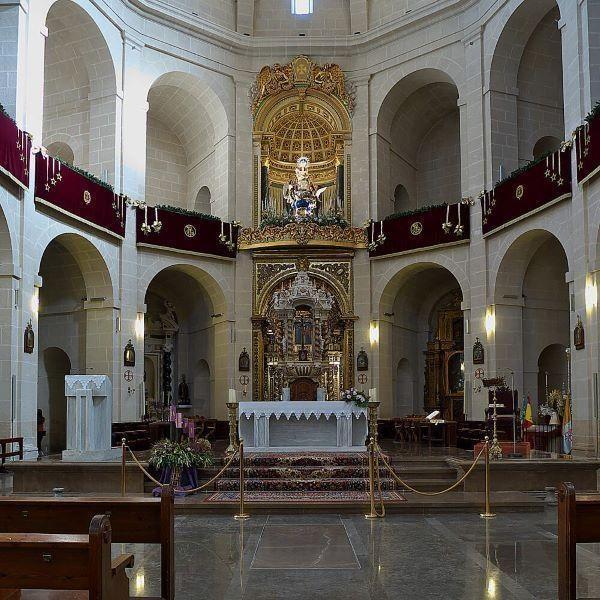
This church was built between 1613 and 1662 replacing a building that had stood their previously. It is built in the Herrerian renaissance style and is located in the heart of the city.
The floor plan is in the shape of a Latin cross, with an interior that boasts notable features such as the 15th century cloister with two baroque doors, the altar and the blue cupula (dome) is 45 metres high. Below the cupola is the Capilla de la Comunión communion chapel, which is considered to be one of the most beautiful examples of Spanish baroque.
Despite its rather bare exterior, the interior of San Nicolas is something to behold. In addition to the quiet chapels, you will find a raised pipe organ and quiet cloisters and well-tended gardens.
The interior has recently been restored to mark the celebration of the La Luz de las Imágenes exhibition (The Light of Images) in Alicante, which aims to recuperate and promote the Region of Valencia’s artistic heritage.
Plaza del Abad Penalva 2 - Opening hours: From Monday to Saturday from 11.30 am to 12.30 am from 5.30 pm to 6.30 pm
Churches to visit Alicante region
Iglesia Arciprestal de Santa Maria (Basilica) - Alcoy

Building began in the eighteenth century, in front of the Convent of San Agustín (13th century). In 1936, with the outbreak of the Civil War, the "Revolutionary Committee" agreed to the demolition of the temple, carried out in 1937, losing almost all the pictorial heritage of its walls. The reconstruction began in 1940 and in 1955 the new church was blessed, on the site where the old temple was built using the remains of the previous church.
Nuestra Senora de Consuela Church - Altea
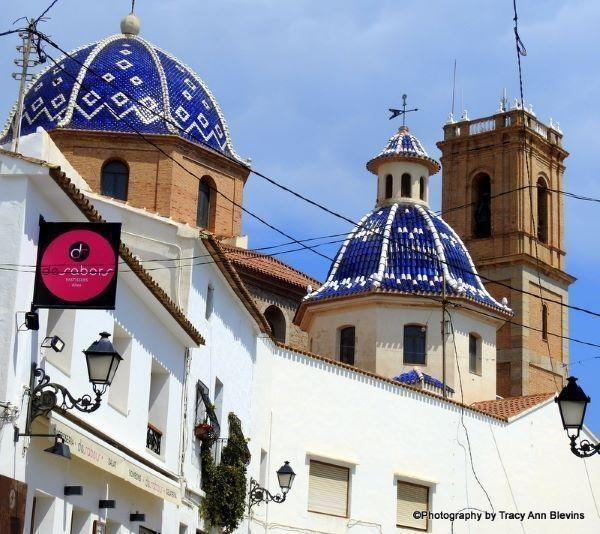
This impressive church (Nuestra Señora del Consuelo) overlooks whitewashed buildings and a bustling square, filled with quality restaurants and cafes that encourage you to linger over lunch. Inside the church is flooded with light through the glorious stained-glass windows and the murals and sculptures on display are equally beautiful.
When outside look at the bell towers and you'll notice that one of the three, destroyed in the Spanish civil war, has been left as a symbolic reminder of the destruction that conflict causes.
Church of Saint Michael the Archangel ((San Miguel Arcangel) - Altea
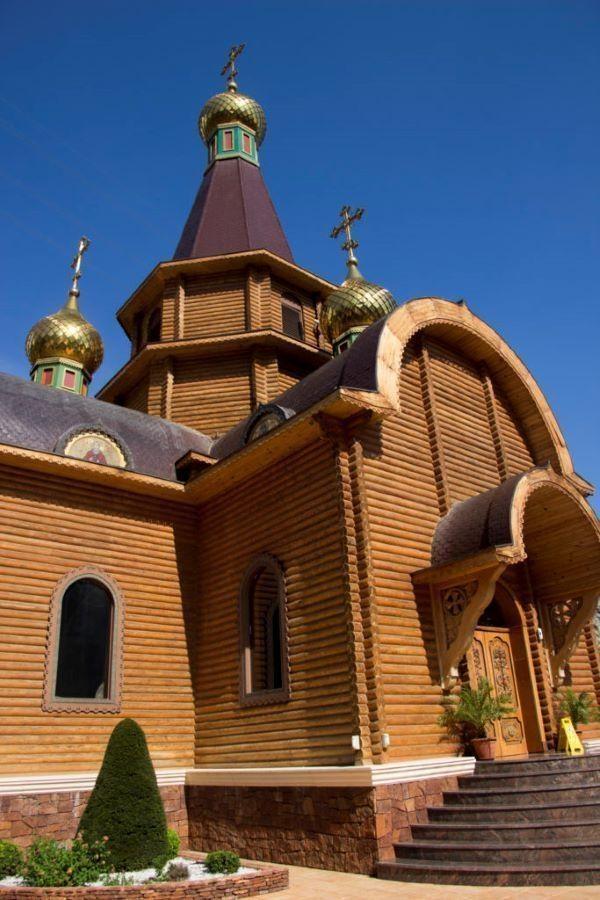
Between Altea and Calpe on the N332 is where you will find the first Russian Orthodox church in Spain. The church of Saint Michael the Archangel was opened in 2007
The church was funded by a Russian entrepreneur who has business interests in both Altea and Calpe and was built with the co-operation of the local Roman Catholic clergy. It is an exact replica of a 17th century Orthodox temple in Russia and building materials for the church were flown in from the Urals and specialist craftsmen from Russia were drafted in for the construction work.
The church is open from 10am to 2pm Mondays to Fridays, 10am to 8pm on Saturdays and 8am to 6pm on Sundays.
Iglesia de San Jaime y Santa Ana (St James Church) Benidorm
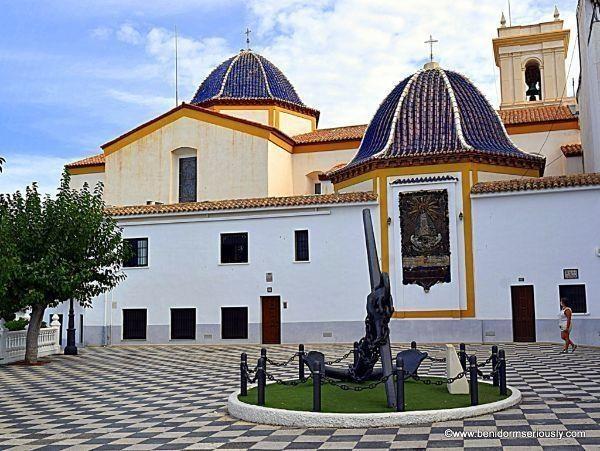
The church of “Saint James is dedicated to the patron saint of the town, is set at the very top of the Old Town on Canfali hill. It is a Neoclassical building, built in the 18th Century with the typical blue Mediterranean tiled dome.
Inside you´ll find a statue of the Virgen del Sufragio, the well-loved patron saint of Benidorm. The Virgin has her own small chapel containing the little wood sculpture which, as the story goes, was found on a boat adrift on the high seas.
The legend of the Virgin says that in 1740 the residents of Benidorm were surprised by the arrival of a ship who had sailed there without crew. It was thought that perhaps the cause of the disappearance of the crew was the plague and this instilled dread in the local villagers. The authorities decided to burn the boat to keep people safe. It was burned without removing anything. When the flames were extinguished, the children searched amongst the remains and found “intact and shining” an image of the Virgin with the Child Jesus in her arms. The Fiesta Day of the Virgen del Sufragio is always held on the second Sunday of November.
The church is open for Mass at 10am until 13.00 and then is closed until the evening Mass is at 7pm then one at 8pm, On Sunday various Masses are celebrated throughout the day and the church is open until after the last Mass. Beautiful music is piped during the day throughout the building and it really is a stunning church well worth seeing whilst in Benidorm.
Churches to visit Alicante region
Purissima Xiqueta Church - Benissa
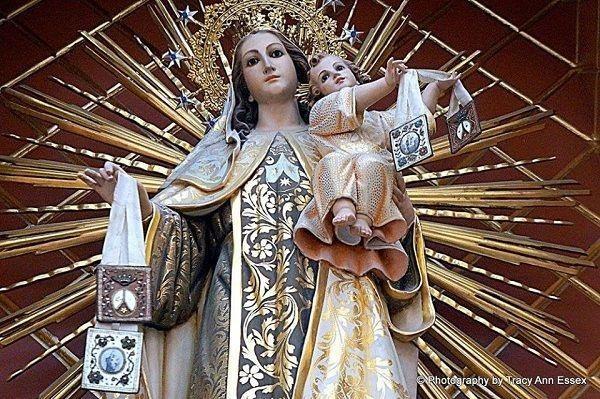
"La Catedral de la Marina" this is one of the largest churches in the region, construction began in 1902 and was completed in 1929. It is 35 metres high and neo-Gothic in style and is just beautiful inside.
This church has three naves and a beautiful central lantern tower – a skylight within the church, at the centre of the crossing – and its altar, with a painted image of the Puríssima Xiqueta.
Well worth a visit, if only for its size and the grandeur of its architecture.
C/ Fray Humilde Soria, 3. Opening times - Monday to Sunday from 10.00 a.m. - 12.00 p.m.
Santa Barbara Basilica - Elche
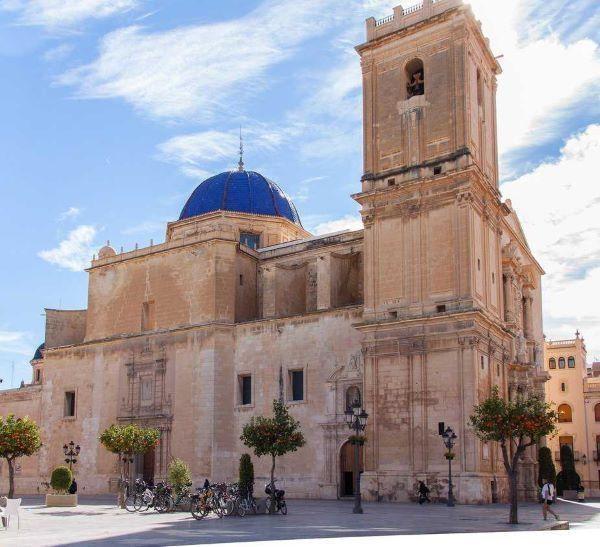
Plaza Santa Maria, 2, Opening hours Monday to Sunday from Mornings: 07:30 to 12:30 Afternoons: 18:00 to 20:30
You can climb to the top of the tower for some spectacular views for a small fee - Tower Opening Hours: Monday to Sunday: 10:30 to 15:00. June, July, August and September: from 11:00 to 19:00, 12th and 13th August: closed.
Saint Bartholomew - Javea Old town
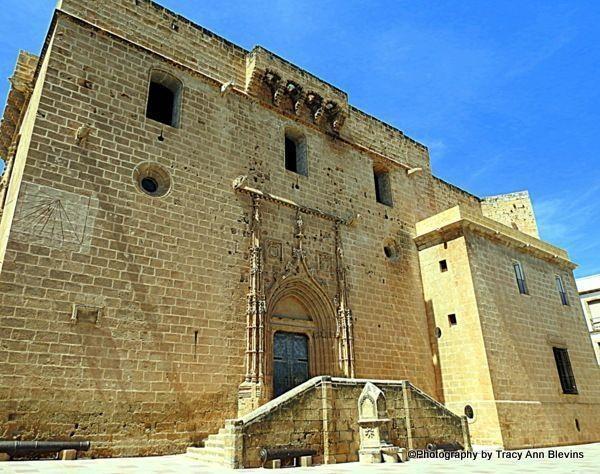
The church of San Bartolemé in the town centre is an example of late gothic architecture with a defensive character. The "Soler Blasco" Archaeological Museum is close by in the narrow streets and offers a wealth of information about Iberian history.
This historic church can be found in the Plaza de la Iglesia and the oldest parts dates back to 1304, the bell tower which is 30 meters high and stands at 86m above sea level was also used as a watchtower to defend the town from the seafaring Berber pirates.
This building is of Elizabethan Gothic style. It has a large Gothic nave with three chapels on each side that are framed by buttresses.
This building is considered one of the best models of ogival art (an arch with a pointed apex) in the Valencian Community.
Opening Hours - Monday to Friday 10.30 - 12-30 and in the afternoons, Saturdays, Sundays and holidays it is open 30 minutes before Mass
Mass times - September 1st to June 30th, working days at 08:00 Tuesday to Friday 19:30 p.m., and holidays at 10:00 a.m, 12:00 p.m. and 19:00 p.m. July 1st to August 31st working days 08:00 am; Tuesday to Friday at 20:00 p.m., eve at 19:30 p.m. and holidays at 10:00 a.m., 12:00 p.m. and 19:00 p.m.
Our Lady of Loreto Church Javea Port
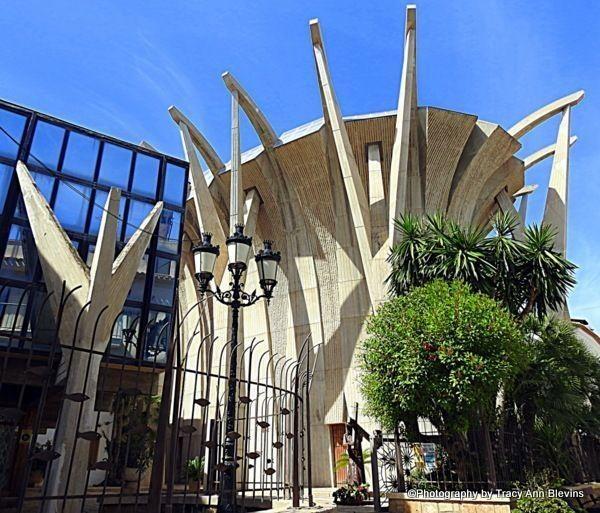
Dominating the fishing port of Javea is the modern silhouette of the church of Nuestra Señora de Loreto, with its roof depicting a ship's hull. The Iglesia de la Virgen de Loreto (church) built in 1967 this is one of the most modern churches you’ll ever see, with fantastic avant-garde design which is based on a single ship with an oval plan this design is very unusual. The 12 slender pillars outside are an allegory to the 12 apostles. This is such a rare design for a religious building,
Address: Calle Pío X, 9, 03730 Jávea, Alicante, Spain, (situated in the district of Duanes de la Mar)
Opening Hours: 9:00 am until 8:00 pm, throughout the year, extended until 9:00 pm. during the summer months.
Churches to visit Alicante region
Santuario Santa Magdalena - Novelda
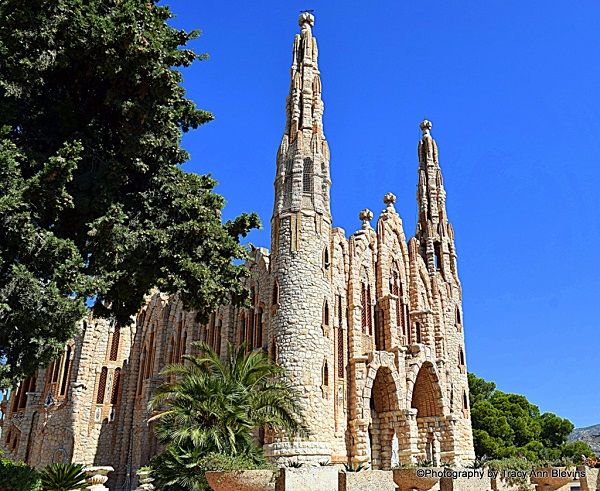
Situated 3 km from Novelda, on the hill of La Mola, next to the Almohade fortress
This is a magical religious building which was designed by José Sala Sala, and was obviously heavily influenced by Antonio Gaudí as this building does bear a resemblance to the Roman Catholic minor basilica of the Sagrada Familia in Barcelona. Construction started in 1918 and required three phases to finish the work in 1946.
On the main facade stand two side towers of 25m high culminated by a stone cross, which is also located in the dome and on the upper arches of the facade, pebbles from the Vinalopó River, polychrome tiles, bricks, reddish masonry, ceramics, etc, have all be used on the exterior of the building, giving it a unique look.
The interior consists of a rectangular central nave with two side spaces tied, that is, an original base shaped like an ointment vessel, (a vessel with which according to the Christian tradition Mary Magdalene anointed the feet of Jesus Christ). In the background, in the apse, is the chamber of Saint Mary Magdalene, behind the altar there is a beautiful painting attributed to Gastón Castelló.
Opening hours - From 1 October to 30 April: EVERY DAY from 10 to 14 h and from 16 to 19 h.
From 1 May to 30 September: EVERY DAY from 10 to 14 h and from 17 to 20 h. August, Closed Monday, Tuesday and Sunday. Open Wed, Thurs, Fri and Sat 10:00 to 13:00 h. and from 18:00 to 20:00 h.
El Salvador Cathedral - Orihuela
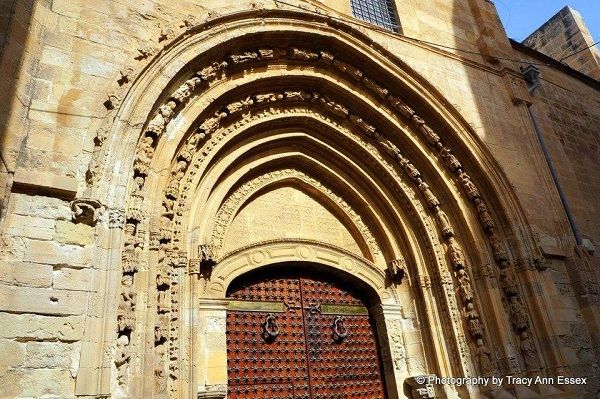
The Cathedral was built above a pre-existing Muslim Mosque as a simple parish church and was later converted into main church by order of King Alfonso X of Castile in 1281. In 1413, pope Benedict XIII elevated it to the rank of collegiate, until it became a cathedral in 1510.
Construction was begun in the late 13th century in Valencian Gothic style, with a Latin cross plan including a nave and two aisles, an ambulatory and chapels within buttresses. The crossing, the late-Gothic great chapel, and the ambulatory are 15th century-early 16th century additions, including the removal of two pillars of the nave to obtain a taller vault at the crossing, after a design by Pere Compte.
The interior receives little light due to the small size of the windows. There are three entrances: the Puerta de las Cadenas (Portal of the Chains, 14th century) is in Islamic style, the Puerta de Loreto (mid-15th century) is Gothic, and Gate of the Annunciation (at the north, built in 1588 by Juan Inglés), in Renaissance-style triumphal arch-shape. Other Renaissance elements include the stalls and the grills of the choir, and the cloister (originally from 1377, but rebuilt until 1560). The oldest part is the bell tower, which dates from late 12th-mid 14th centuries.
It has four floors covered by groin vaults.
Annexed to the church is a museum of Sacred Art, housing works by Diego Velázquez (Temptation of St. Thomas), Vicente López Portaña, José de Ribera, Juan de Juanes, Francisco Salzillo and other artists.
Visiting Hours: Monday through Friday, Saturday mornings. 10.30am-2pm and 6pm-6.30pm
FIND DETAILS OF OTHER PLACES TO VISIT HERE
IF YOU HAVE ANY QUESTIONS COMMENT BELOW.
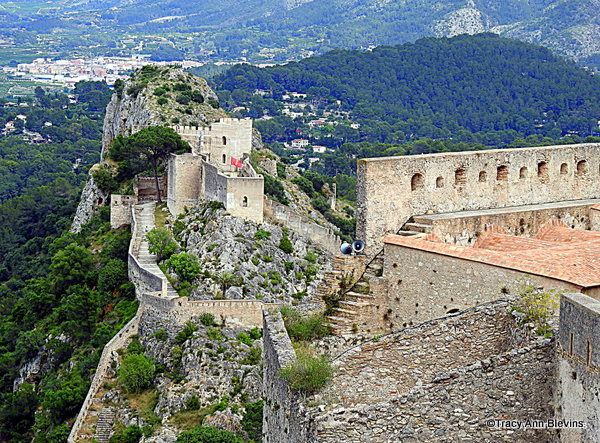
Xativa, Játiva Province of Valencia
Xativa or Játiva is situated in the Province of Valencia, 117km from Benidorm and is the capital of the La Costera region. The town is famous for being the birthplace of the Spanish painter El Espanoleto and two popes from the Borgia dynasty.
Xativa dates back to the Iberian culture, which is where its name comes from and during Roman times was an important commercial hub, being located at the foot of the Via Augusta. Xátiva was the episcopal seat of the Catholic Church, under Christian rule it became the second most important city in the Kingdom of Valencia. Its recognition as a city dates back to 1347
Xativa suffered a dark moment in its history at the hands of Felipe V, who, after victory in the battle of Almansa in the War of Spanish Succession, ordered the city to be burned, changing its name to San Felipe. In memory of this insult, the portrait of the monarch hangs upside down in the local museum of L’Almodí.
The very first paper factory in Europa was built in Xativa in the 11th century.
This area is renowned for having the highest temperatures in the region, if you need to cool off visit Ontinyent, Pou Clar Water Falls which is only 27km away.
The city has lots of artistic heritage, but also a very modern area with all necessary amenities.
Find information on other places to visit in this section of the website.
Places worth visiting are -
Renaissance collegiate church
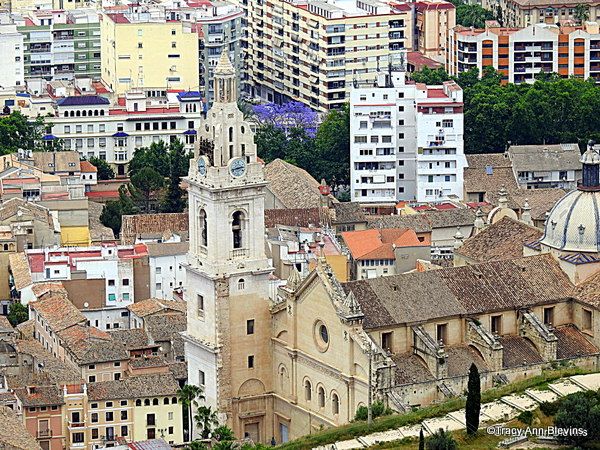
This is one of the cities most emblematic buildings and stands out against the city skyline and is visible from all points in the surrounding area, and has been declared a Cultural Heritage Site. It is called La Seo and has a strong Renaissance character. It was built between 1596 and 1916. The main entrance is Baroque and the High Altar corresponds to designs by the architect Ventura Rodríguez. The collegiate church is dedicated to the Asunción de Nuestra Señora. Members of the House of Borgia are buried.
The 60-metre high bell tower reached by climbing 180 steps dates to the 19th century and is crowned by a shrine to the Virgen de la Seo, who is the patron saint of the city.
Xativa, Jativa province of Valencia
The collegiate museum contains a fantastic collection of religious art, with paintings and pieces of Gothic craftsmanship in precious metals.
Opening times - Monday to Friday 10:30 AM to 1:00 PM. Public holidays and Sunday 11:30 AM to 1:00 PM - Entrance fee 1€
Museum of fine arts
Museo de Bellas Artes, the Fine Art Museum. Also known as Casa de la Enseñanza is one of the best places to find out about the fascinating culture of Xàtiva. This impressive building was built in the mid-18th century and has a Baroque façade with the heraldic coat of arms of the founder of the educational institution that was once housed here.
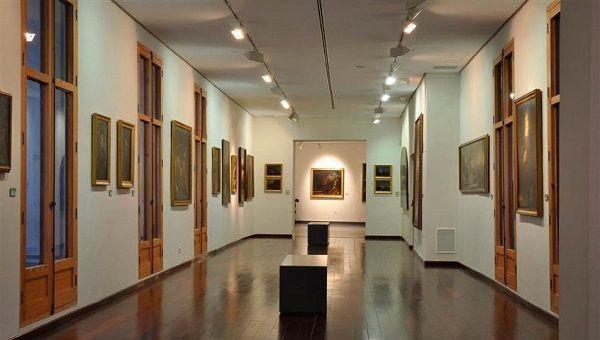
This is where you will find the famous upside down portrait of Felipe V as well as engravings Caprichos and Disparates by Francisco de Goya and alongside the remains of sculptures once housed in Capilla de Calixto III, you can see a collection of Baroque paintings belonging to Museo del Prado, paintings by Ribera, Reni, Mazo, Giordano, Vicente López and Benlliure
Casa de la Enseñanza was refitted to house one of the most important collections of Valencian art and one of Xàtiva’s flagship cultural projects. Inside Museo de Bellas Artes, you will find a number of important pieces that showcase the cultural heritage of the region.,
This museum can be found in the Plaza Arquebisbe Mayoral and is open From Monday to Saturday: 10.00 - 14.00 and 16.00 - 19.00, Sunday and holidays: 10.00 - 14.00
Almodí Museum
This museum is housed in a historically important building of the same name. Constructed in the mid-16th century, it was once a wheat market, the original Gothic façade and an outstanding Renaissance courtyard with Ionic columns can still be seen. The museum also occupies the adjacent building, which was once the royal weights and measures office which was later remodelled to accommodate the customs office and later the Bank of Spain.
The exhibitions here focus on archaeology and feature reproductions of the first remains to be uncovered in the Cova Negra as well as Iberian, Roman, Visigothic and Islamic remains and an 11th century Islamic water trough and the famous arches of Xativa´s arab ancient public baths.
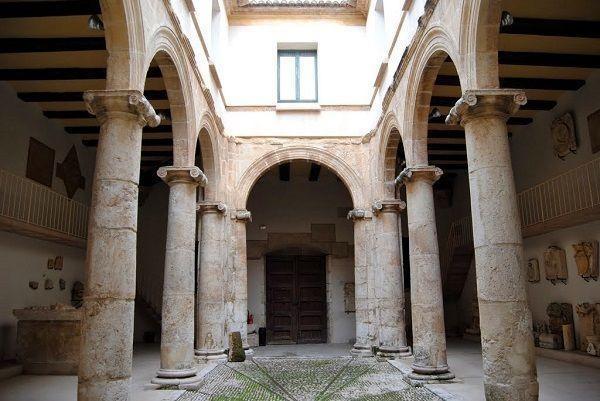
Opening hours - From Monday to Saturday: 10.00 – 14.00 and 16.00 – 19.00,Sundays and holidays: 10.00 – 14.00
The palace of the Marquis de Montortal
This has its origins in moorish times (early sixteenth century) and was rebuilt after the earthquakes of 1748.It was then when the foundations of what is the current building were laid.
Xativa, Jativa province of Valencia
Hospital Reial
Founded as a royal hospital by Jaume I in 1244 and rebuilt centuries later, this is one of the most striking and fascinating monuments in Xàtiva. In addition to its mesmerising beauty, it presents an intriguing blend of late Gothic architecture and the first steps in Renaissance style, and is the building that best exemplifies mid-16th century Valencian architecture. The hospital has tended the health of Xàtiva residents for more than five centuries.
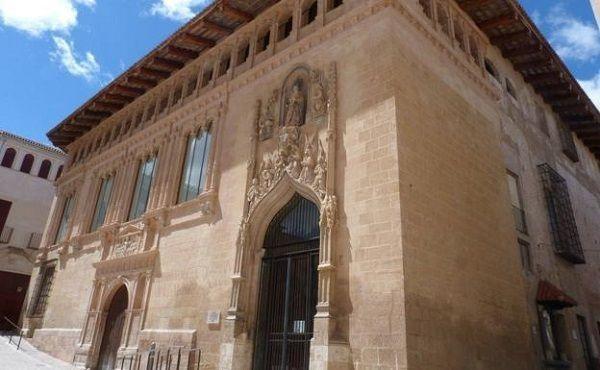
The hospital was hit hard by the fire of 1707, especially inside, and was rebuilt in the early 18th century, when the rooms were decorated with tiled panelling from the Royal Factory of Valencia. In 2006, the chapel was restored to house the visitor reception centre.
The Hospital Reial can be found in the Plaza Calixto III
Opening times - Tuesday to Saturdays: 11- 14 h / 16 – 18 h and Sundays and holidays: 11- 14 h.
Check out the various fountains around the town - Baroque fountains: San Francisco, the Trinidad fountains, which are Gothic, and the Neoclassic fountain with 25 jets.
Xativa, Jativa province of Valencia
Plaça de la Trinitat
This is one of the most important places in Xàtiva and the one was once the centre of the city in medieval times ,it is surrounded by important buildings of historical value, such as the Palau d'Alarcó, a convent and in it flows the Motcada street, which is where the nobility of the city built their houses.
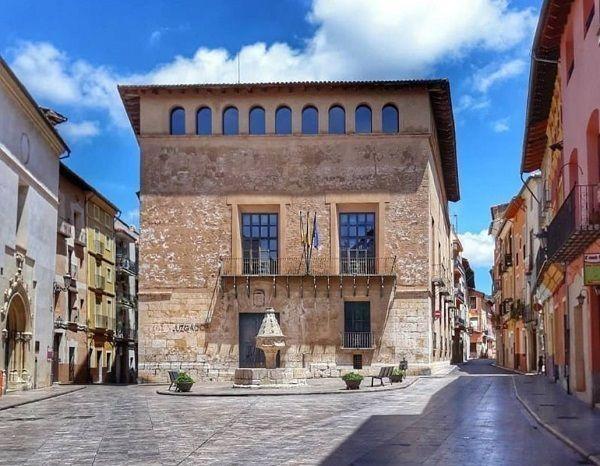
The Font de la Trinitat fountain presides over the square, and is one of the few Gothic fountains remaining in Spain. It dates back to the last third of the 15th century, and the originally polychrome octagonal basin shows the city’s coats of arms.
The place to be in the evenings is the town square, which had a selection of bars and restaurants all busy, most with local families all enjoying the balmy evenings, with children running about the square closely watched by nearby family members, such a lovely atmosphere, and on a Friday morning this is where you will also find the weekly market with some great bargains to be had. (Due to covid rules this can now be found on the main road by the pretty dry river bed) Friday evenings is when the place really comes to life with local bands (informal brass bands marching/well more strolling) that seem to have some sort of play off against each other with all the locals joining in dancing, clapping and singing along.
The Marquis of Alarcó Palace
Located in the Plaza de la Trinitat, this is considered to be the most monumental civil building in Xàtiva, despite being dated to the 18th century and was constructed after the fire of the city in 1707.
The hermitage of San Félix, Located on the slopes of the castle, this is and sits on a place of an ancient pagan temple, built in 1265 making it the oldest in the city (it is said to have been a Mozarab temple and that Jaime I rebuilt it). The church of Sant Pere, where Alexander VI was baptized, the Royal Hospital, which still preserves its original Renaissance façade.
The garden of the kiss, Jardín del Beso
The Garden of the Kiss gets its name from the love poems that the Italian philosopher dedicated to his beloved Carmen in the shade of the trees here, is also known as The Garden of Carmen Pérez, it was originally known as the "Garden of Verse"
This is a perfect place to sit and unwind, there are a large number of benches next to or nearby the remains of the old wall, this is also where you will find fountains with water from the Bellús spring and a old modernist temple.
Xativa, Jativa province of Valencia
Xativa Castle
The castle is the most outstanding feature of Xativa, with its 30 towers and four fortified gates and what most people go to visit . This castle is the result of the fusion of an Iberian-Roman fortress and a later Arab one. Running down from the castle are the walls which until the 10th century enclosed the Roman city. A second wall was added later which took in what today is the historic quarter.,

The castle forms the highest point of the defensive walls that once encircled early mediaeval Xàtiva. Despite its Iberian and Roman roots, most of castle walls and towers preserved today are of Islamic or Gothic origin. The castle has been declared a Cultural Heritage Site. No visit to Xàtiva is complete without a trip here.
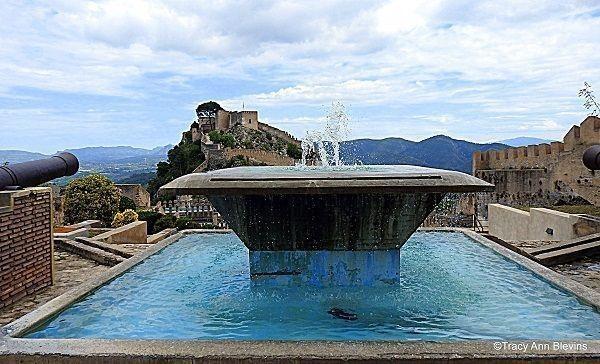
The castle featured in Hannibal Barca’s military campaigns. and is reportedly where Hannibal prepared for the siege of the Roman city of Saguntum, which took place in 219 BC. Which of course, involved his military elephants. According to legend, Princess Himilce bore the Carthaginian general’s son in Castell Menor, in 218 BC. There is a balcony named after Princess Himlice and a gate named after Hannibal.
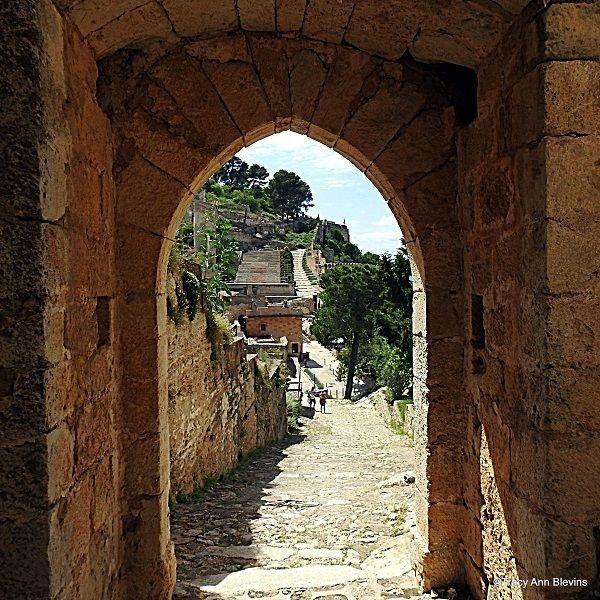
Opening hours - April to October Tuesday to Sunday from 10.00 to 19.00. Closed Mondays (except public holidays and the days prior to public holidays). October to March -Tuesday to Sunday from 10.00 to 18.00. Closed Mondays (except public holidays and the days prior to public holidays).
Fiestas
The Fallas (from March 15 to 19)
Corpus Christi - This procession takes place in June. This solemn but colourful event features many elements of local culture,
Holy Week, Easter - The Holy Week celebrations in Xàtiva are among the most long-standing and lavish of their kind in the Region of Valencia.
The most popular fiesta of Xàtiva is, without a doubt the August Fair. It is celebrated from the 15th to the 20th, with all kinds of events (bullfights, songs of "Albades", paella party, outdoor concerts, fireworks, artistic performances, local craft and food stalls, gastronomy, etc. It is declared a Festival of National Tourist Interest.
Christmas festivities, during which a life-size Bethlehem is mounted in the Alameda Jaime I
Cova Negra
Just outside of town you will find the Cova Negra (Black Cave), which when unearthed revealed relics from over 30,000 years ago.
This area was declared a Municipal Nature Park in 2006. Located in a narrow valley that runs along the river Albaida, the park covers 57 hectares of spectacular countryside and includes the Cova Negra archaeological site (Named after the dark colours of its walls). Human remains and paintings have been found inside
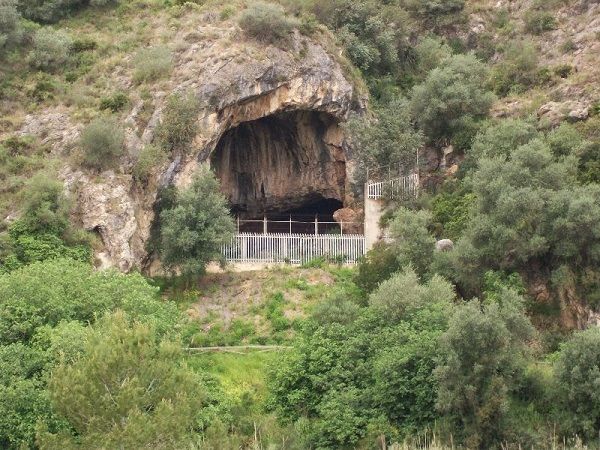
Getting to Xativa from Benidorm
Drive, the journey is around 1.30hr 117km via the AP-7 and CV-60
Bus - Journey time between Benidorm and Xàtiva is around 5h 4m and covers a distance of around 204 km. The fastest bus normally takes 4h 55m. Operated by ALSA. Typically six buses run weekly, although weekend and holiday schedules can vary so check in advance.
Tram and Train - Catch the Tram at Benidorm to Alicante Luceros, walk to Alicante-Termino (6 mins) catch the train to Xativa, journey time approximately 3h 28m €15- €20
Join us on FB for regular updates or use our own social feed to ask any questions - The Benidorm Social Club
Find information on other places to visit in this section of the website.
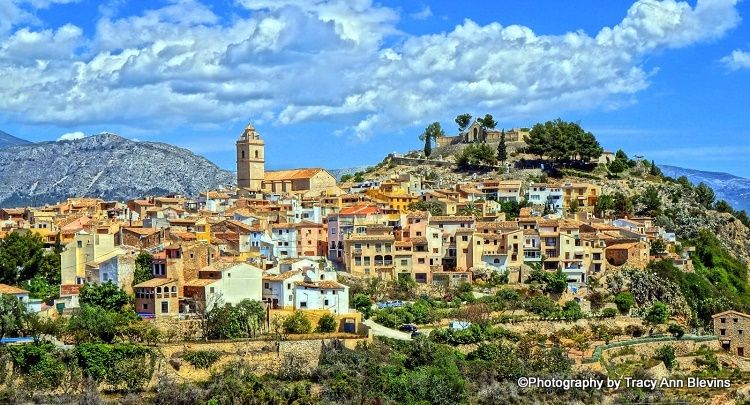
All About the Village of POLOP
The village of Polop is located inland in the Costa Blanca North in an area known as the Marina Baja (Baxia). The local economy is based mainly on agriculture, almond, citrus fruits and olive trees are among the major crops so much of the surrounding countryside is covered in polythene to act as giant greenhouses.
The village is a delight to explore and perfect for a morning or afternoon stroll. The hill, where the old castle used to be is encircled by a medieval wall, and is a 'must' to walk up you will also find the old Municipal Cemetery here. Follow the zig zag path and you'll be well rewarded with some fabulous views.
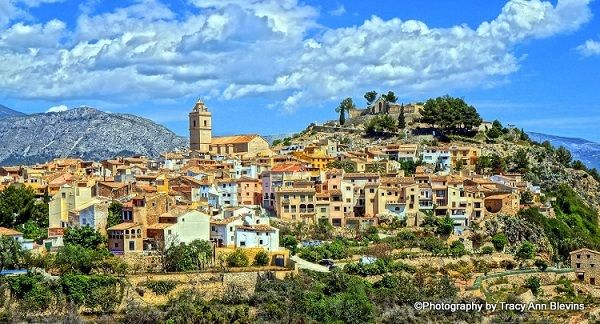
25th November 2020, Good news for Polop Castle. This is now being repaired and once work is completed will be musealized, similar to other local places such as Tossal de la Cala and the Benidorm viewing point, EL MIRADOR de la Punta del Canfali
All about Polop
On a clear day you can see right to Albir and Altea on the coast and inland to Callosa and the Sierra Bernia. You'll be able to make out the Leon Dormido (mont Ponoch Mount Ponoig 1,180.) - the sleeping lion mountain which sits behind Polop.
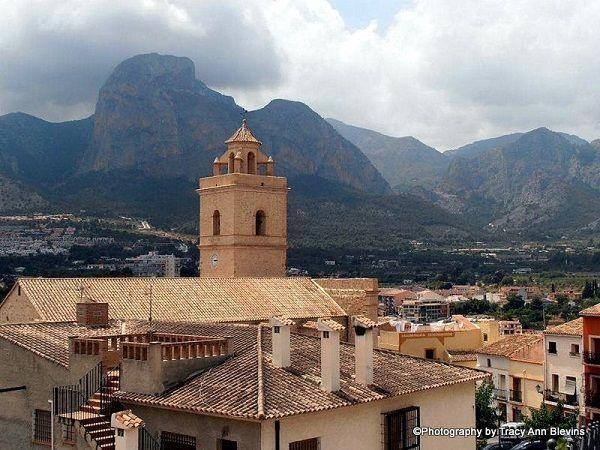
Take a wander round the narrow streets of the town centre. The streets of Polop are typical like many of the villages in Alicante. Many of them are single-family houses with typical mountain architecture. Because of this they have large wooden doors and wrought iron balconies, you will see the residents with their chairs outside in the streets talking to neighbours.
The San Pedro church halfway up the hill is a focal point in the village. This church has been restored but there is a story that states that it did not have a roof in the sixteenth century. And that masses had to be celebrated in the castle....
if you visit on a Wednesday there is a small street market in the morning.
Also worth visiting is the museum of Gabriel Miro who was a famous writer and poet who lived in Polop in the early 1900’s. His house has been turned into a fantastic museum and entry is free.
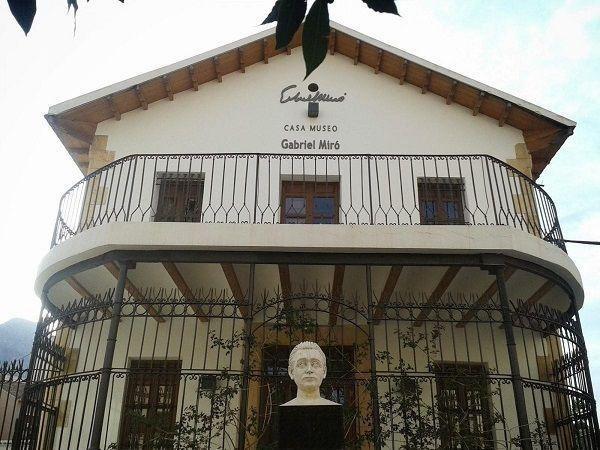
The city council acquired the museum dedicated to Gabriel Miró in 2011. It is located on the Plaza de los Chorros. The great and unrepeatable writer, Gabriel Miró stayed for long periods of times in Polop and liked to walk. These walks inspired him to write one of the famous works of universal literature, Años y Leguas (Years and Leagues). The Museum is really worth a visit, and it is completely FREE. Objects that were important in his life decorate it. In addition, the same building houses the tourism office, so it is ideal to stop to ask for information and grab a map.
The main town square is famous for its natural “Fonts” El Fuente de los chorros and has over 200 individual outlets that draw people from far and wide for its waters, you will still see locals fill bottles of fresh water for use at home.
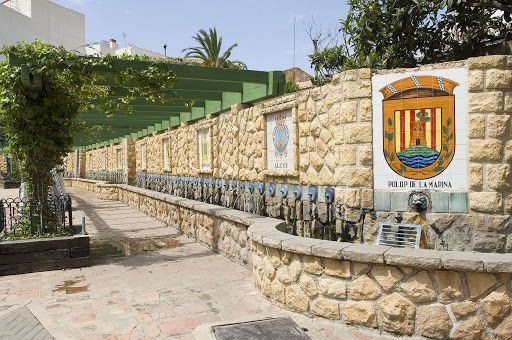
Costa Magic museum which houses the works of Antonio Marco, who has created scenes of the Valencian community in miniature. You can see the Cathedral of Valencia, the mirador of Benidorm to name just 2 of the fantastic scenes he has created in miniature. Antonio Marco is famous for creating the Belen and dolls house museum in Guadalest and the works that he has displayed in the Costa Magic Museum are totally different and dedicated to the Valencian community, architecture, agriculture and transportation and it is definitely worth a visit. Usual cost to enter the museum is around 6€
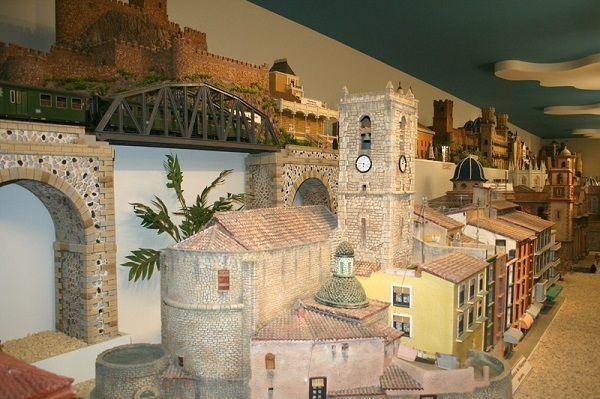
Other places to see
The square of the sculptor Ginés
The Plaza de la Ermita de San Roque for beautiful views of the town.
The avenue of Emilio Sagi-Barba, the old royal access road to Polop.
Casa del Pósito
The Chapel of the Aurora, Church of San Pedro
Leisure area - L’Hort de Baldó with its lookout house which served as a sentinel point of the Canal gully as it passed between the towns of Polop and La Nucia this is now a recreation area with children´s playground and picnic area
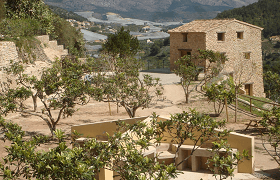
Parc Pont - The natural area "El Pont", in the old riverbed, has picnic areas, leisure areas for the little ones and a natural steam that runs through the area.
A BRIEF HISTORY OF POLOP
The history of Polop dates back to the Iberian culture. The castle present at top of the hill of this city established it as a strong military enclave in the history. The castle of Polop was ruled by Sheikh Abderrahman Alastami Mahomet during 1928. It was then occupied by El Cid in 1090. From then till date, Polop was conquered many times by various emperors such as Arabs Polop, Alazrach, Abenhafar Hamez and so on. The history of Polop is quite long and witnessed numerous battles.
Hardly anything remains of the ancient castle of the twelfth century. Originally from Muslim origin, it was built on the remains of an Iberian fort before the Romans conquested it. After it was dismantled in the civil war, the site was changed into a cemetery.
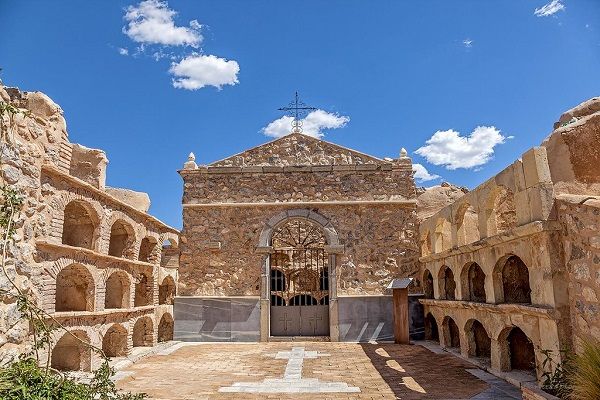
The El Cid local legend?
Cid Campeador (El Cid), whose real name was Rodrigo Diaz Vivar, the famous military leader in the 11th century Spain, was apparently in the area where he learnt that there was a cave full of treasures belonging to al-Mundzir, the emir of Denia. El Cid sieged the castle and when it surrendered after a few days, removed all the treasure. “The Cave of Cid” can be found just under the ruins of the castle.
The Bloody Baptism
Until the 16th century, the population of Polop and its surroundings were mostly Moorish, but in the village of Polop one of the most tragic events in the history of moors took place.
The events started with a revolt in the Kingdom of Valencia and Mallorca by the artisan guilds (Germanías or Brotherhoods) during the rule of King Charles V. It was an anti-monarchist, anti-feudal movement and the rebels were also hostile towards the local Muslim population.
The Muslims from Polop and the surrounding villages locked themselves in the castle in the hopes of finding shelter. The rebels lured them out promising to spare their lives if they were baptized into Christianity, around 800 moors agreed to convert, however soon after their agreed baptism, they were all beheaded. The rebellion was soon crushed, and its leaders executed. The whole area was depopulated, and it took decades until life come back to the area.
All about Polop
Fiestas
As with every town there are various fiestas held during the year, The Porrat de Polop de la Marina festival is held in mid-August and is probably the most popular in the town. This fiesta generally includes a traditional Humour Parade in which local clubs take to the streets in disguise, eager to party, a solemn mass and the Floral Offering to the Virgin of the Assumption a solemn mass and Pilgrimage of San Roque and on the last day, children's activities are organized, and a mass is also celebrated for the deceased of Polop and the farewell of the music bands to end.
How to get to Polop
Drive via AP-7 or N-332 from Alicante by taking CV-70 route, 20 min drive 13km
Taxi - 16 - 20€ each way
Llorente/Avanza Bus numbers 16 & 18
Find information on other surrounding towns and villages here
Like/follow us on Facebook for regular updates or follow us on Twitter
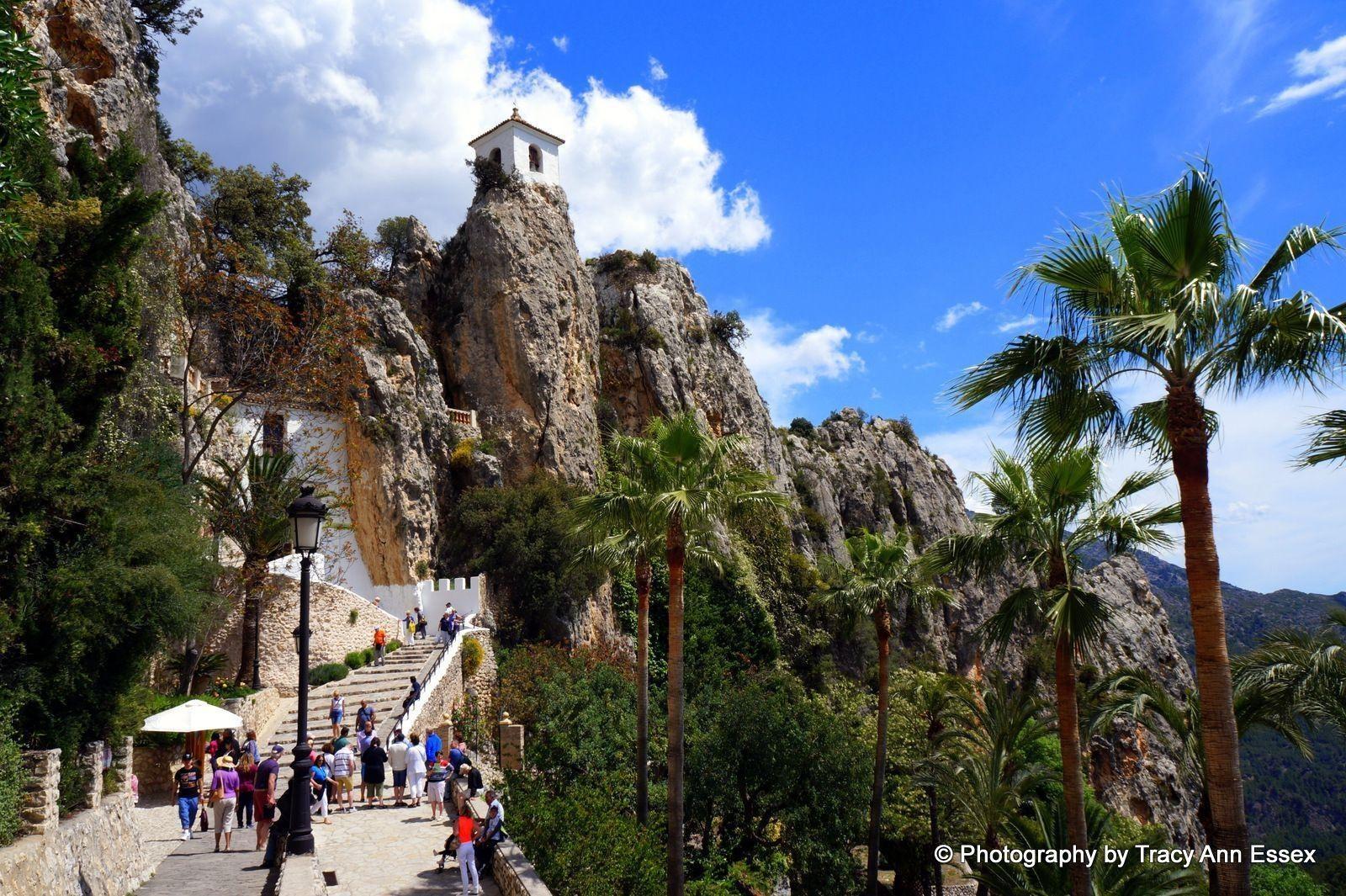
All about Guadalest, Spain - The Eagle's Nest carved into the Mountain Located on the CV-70, 25 km from Altea, is the village of Guadalest. Occupying one of the most stunning positions in Spain, this small village is precariously perched on the pinnacle of a granite mountain, giving fabulous views across the valley carved out by the River from which the village takes its name.
Although only a tiny village with just 258 registered residents (2023 figures) it is one of the most photographed places in the country.
Finding somewhere to eat is easy, as there are 15 "restaurants" that can cater for 599 diners.
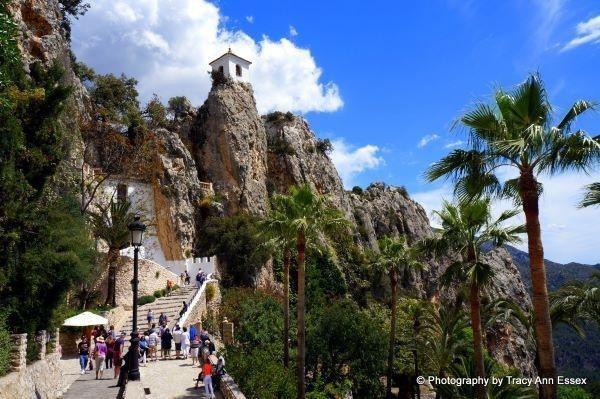
Getting to Guadalest by the twisting road that climbs ever upwards, passing through the village of Polop, is almost as spectacular as the position of the village, but the breath-taking views make the drive worthwhile even for the more nervous passengers!
Guadalest by bus - The No. 16 goes from the Plaza Triangular, currently Mon - Friday ... but only once a day, The bus starts in La Cala Finestrat at 9:45am, reaching the top of the Avd Mediterraneo at 10:05am and the Rincon de Loix at 10:10am. A single journey costs 3.90€. The journey time from the triangle is a little over an hour, passing through La Nucia, Pollop before heading onto the mountain road. The return bus departs at 1.30pm giving you approx 2 hours in Guadalest. llorentebus for details click on the link just in case times have changes or the service is not running.
By Taxi - Between 24€ - 30€ contact Radio Taxi
All about Guadalest
Visit Guadalest with Round Town Travel

Visit Guadalest and Algar Falls with Round Town Travel
On reaching Guadalest you can see why the Moors, who constructed castles to defend the area, considered this place a site of strategic importance.
All about Guadalest
Quadalest castle was built by the Moors in 715AD, was an important strategic point at various times in history. It suffered quite a lot of damage from a major earthquake in 1644 and during the Spanish War of Succession in the early 18th century.
However, the building you will see on most of the postcards is the whitewashed bell tower of Penon de la Alcala which seems to cling to the mountain face.
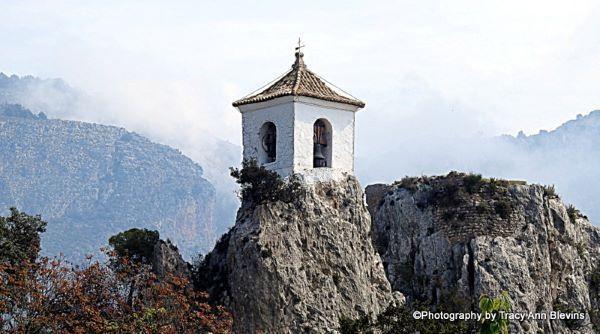
The old village and castle can only be accessed through a 15-foot tunnel carved from the rock and when you reach the other end and see the ancient houses, you seem to have been transported to another time and age.
Below the Portal de San Jose
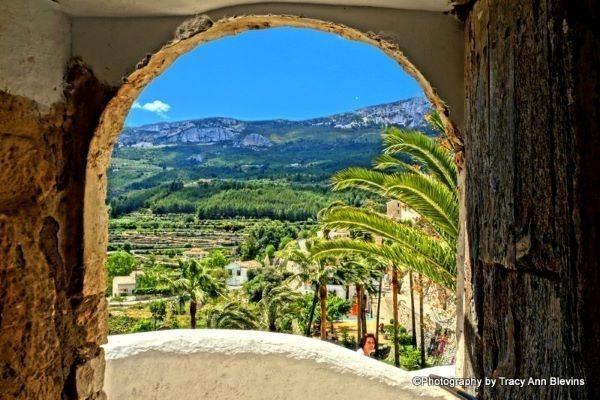
Guadalest has plenty of museums, so you can learn more about its history, little crafts shops and places to buy a souvenir of your visit. Costing only a few euros the visit through the tunnel to the village is definitely worthwhile as the castle tour (starting at 10am) takes in the dungeon (great for the kids) and offers fantastic views across the valley from cobbled footpaths and lookout points.
The population of only 200 people now dedicates itself entirely to tourism, hence some of the area's best museums being located here. If you want to be transported to another world when land was fiercely defended, don't miss a trip to the village of Guadalest!
The Museo de Saleros y Pimenteros (Salt and Pepper Shaker Museum) has more than 20.000 salt and pepper shakers from all over the world!
Andrea Ludden has collected for more than 30 years, and has another museum in the USA, in Gatlinburg, Tennessee, which has another 20.000!
The museum is at Avenida de Alicante 2, El Castell de Guadalest, 03517 Alicante, directly on the main parking area, and is totally accessible, with no stairs or climbs. It is entertaining, educational, and apt for the whole family. The children love it!
Dolls House Museum
This museum is the work of one-man Antonio Marco and has taken him 15 years to complete.
It is a private museum which opens every day of the year. You can see beautifully decorated doll houses with intricate details, a Nativity Scene and other models made from real bricks, stone and iron. The interiors are exact replicas of authentic houses.
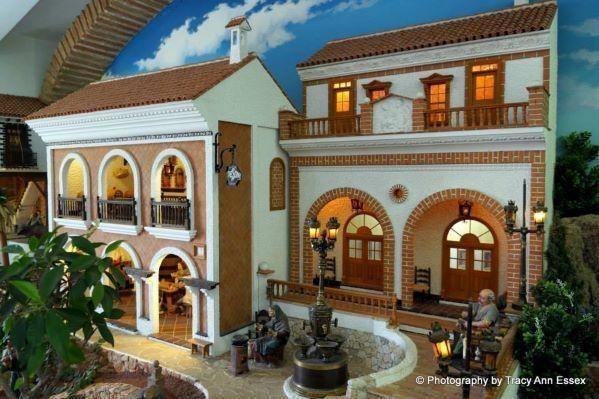
A particularly interesting scale model is the one of a giant Bethlehem. This nativity scene weighs 12 tons and in the style of the early 20th Century. It has received many awards from tourist associations, and the compliments of the Spanish Royal Family.The Nativity Scene required 20 years for its construction, and it is made without using cork, plastic, cardboard, or paint. Instead, stone, tile, brick, wood, iron, natural plants and bonsai were employed.
Micro-Gigantic Museum
This museum has two very different collections -: miniatures that you inspect with a magnifying glasses and giant sculptures.
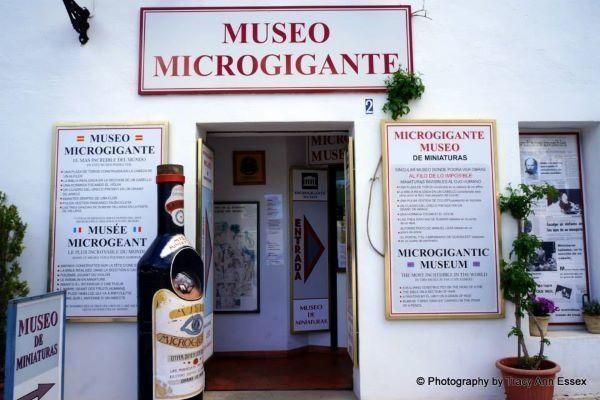
Among the miniatures to be seem are: -
- A bull ring on a pinhead
- A bible written on a hair
- A flea riding a bike on a seed
- The church and the tower of Guadalest on one quarter of a centimetre
- An ant playing the violin
- A miniature of the Kremlin
- A village built on a bone two centimetres long.
Torture Museum
This museum exhibits instruments of torture and execution from Medieval times to the 20th century. Situated in the old town of Guadalest.
The museum is very interesting and has many different kinds of torture devices that have been used throughout Europe. All of them were quite barbaric including the impaling device and a device I like to chop heads off.
Motorcycle Museum.
The museum contains over 100 motorcycles and several small cars from the 1920's to the 1970's which have been restored over the last 25 years. It is open every day except Saturdays from 10.30-18.00 in the winter and 10.30-19.00 in the summer.
Guadalest Tourist Office: Tel. (+34) 965 885 298
All about Guadalest
Guadalest Reservoir, Embalse de Guadalest
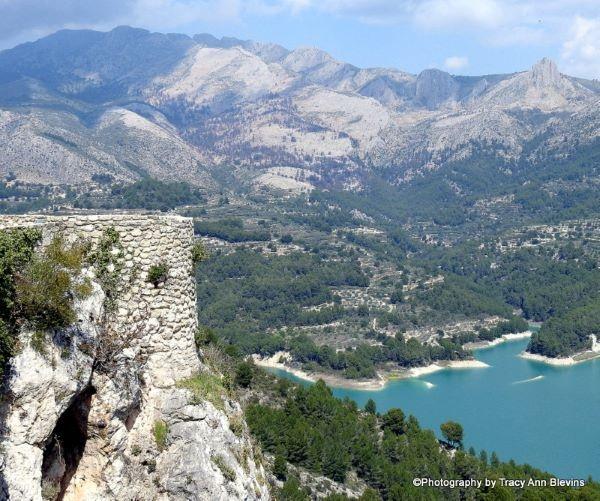
The dam was built across the Guadalest River between 1953 and 1964 and is 73 meters high, 270 meters long and supplies water to many towns and villages in the area, including Benidorm.
You can drive across the dam and along the North side of the lake by taking the turning marked "Embalse de Guadalest" on the road from Guadalest to Callosa. It is also just 5kms by a minor road from Abdet. Follow the (camino rural) road from the bottom of the village all the way to the bridge on the West side of the lake. You could park near here.
Enjoy a lovely walk around the Lake, on minor roads and paths, The journey is about 12.7km (7.9 miles). see map below.
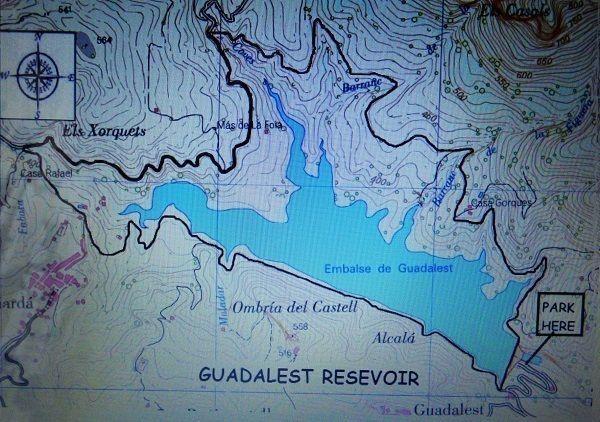
The Guadalest dam is a great place for freshwater fishing, but you'll need a licence.
The green colour is caused by tiny particles of silt suspended in the water. It is perfectly safe to swim in, although not suitable for small children or poor swimmers as the water soon gets very deep. The best access for swimming is from the car parking area at the dam. Go through the gates (where it says dangerous swimming "peligro de bano") you will find some access paths down to the shore.
Did you know that Guadalest has been a location for a number of films? The town has been the backdrop to a number of popular films like “My Life in Ruins”, the sequel to the successful “My Big Fat Greek Wedding”. One of its producers was Tom Hanks! In the film, part of the town’s main plaza and panoramic views of the Guadalest Basin substitute for Greece.
Guadalest in 1940
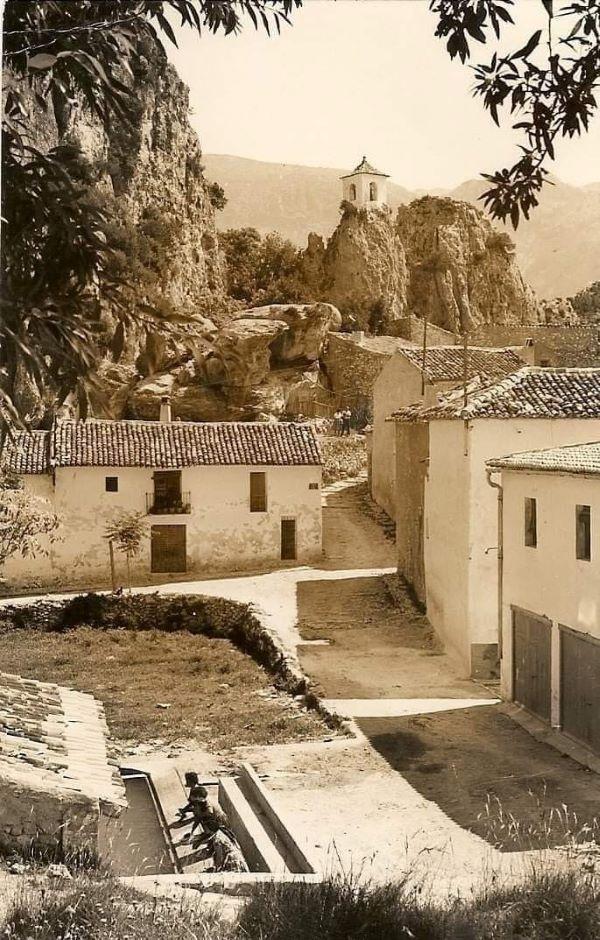
Find more spectacular places to visit in this section of the website





